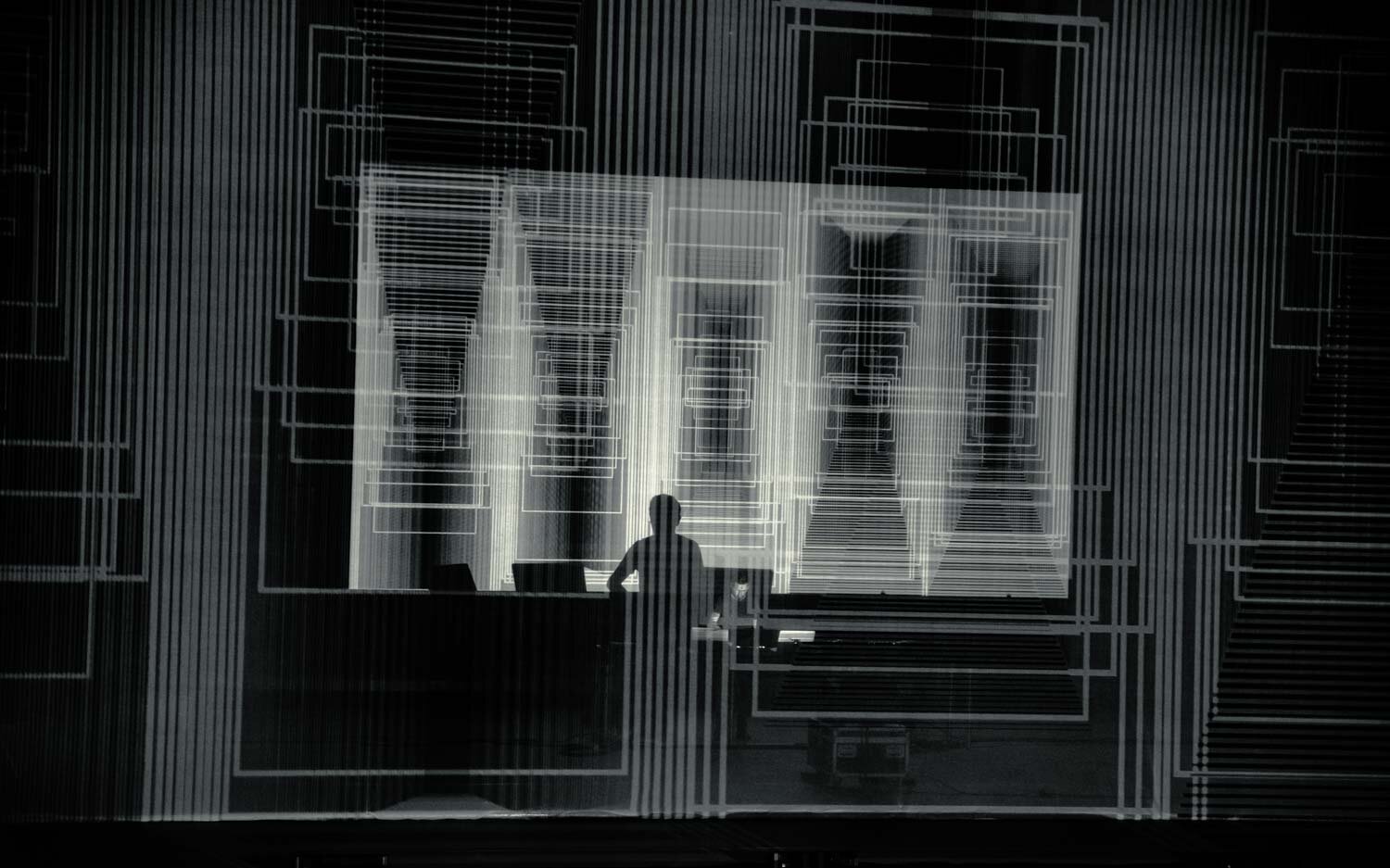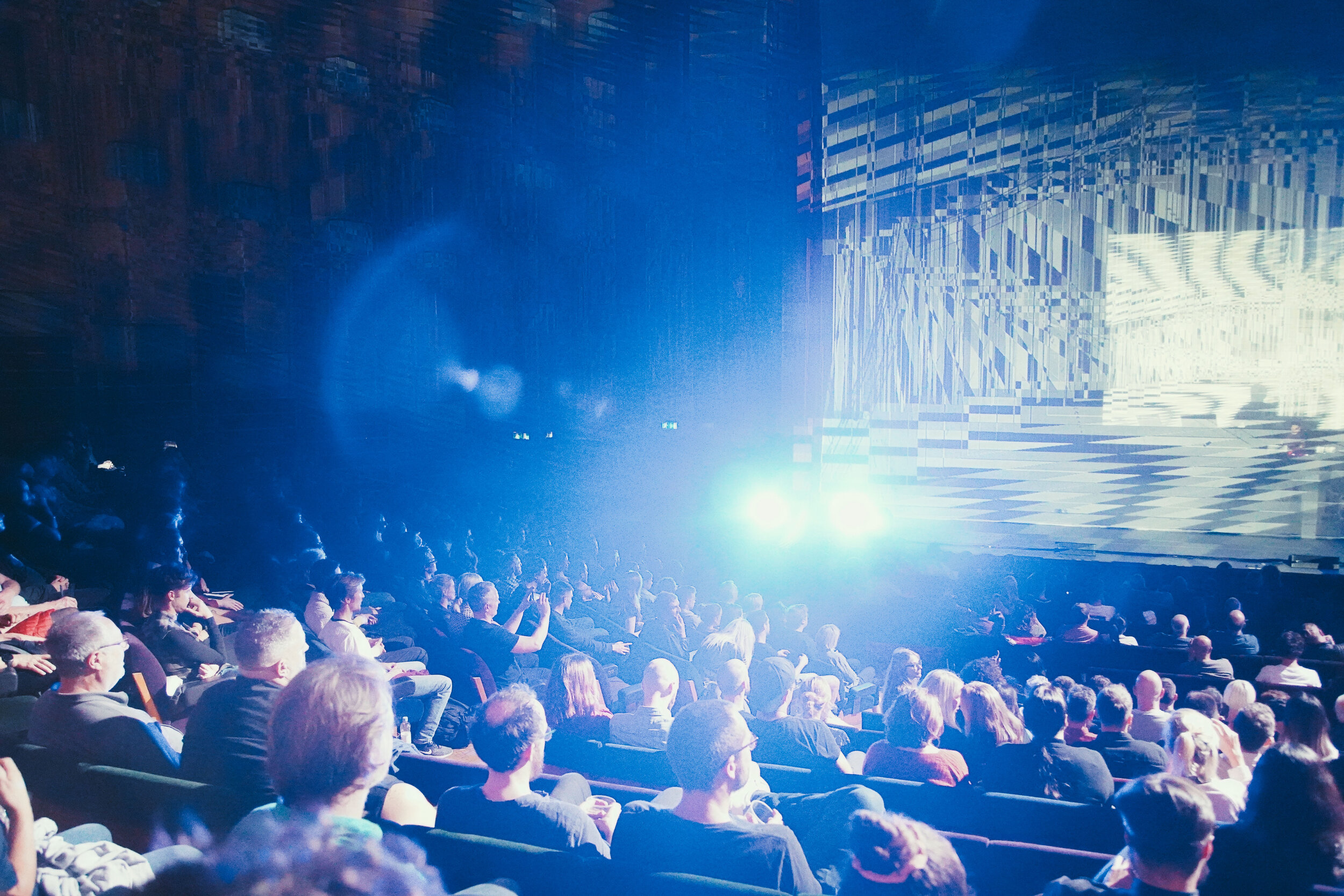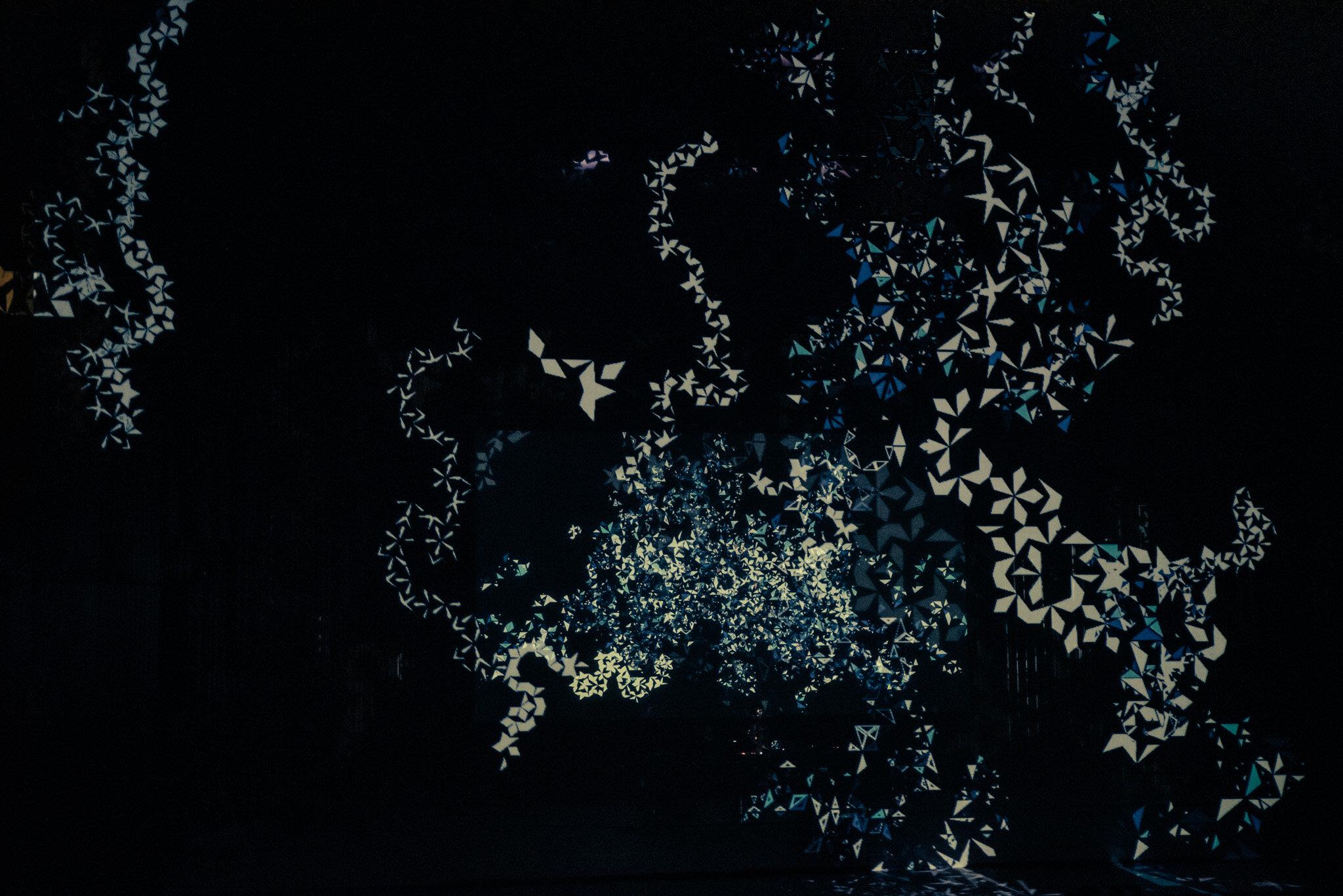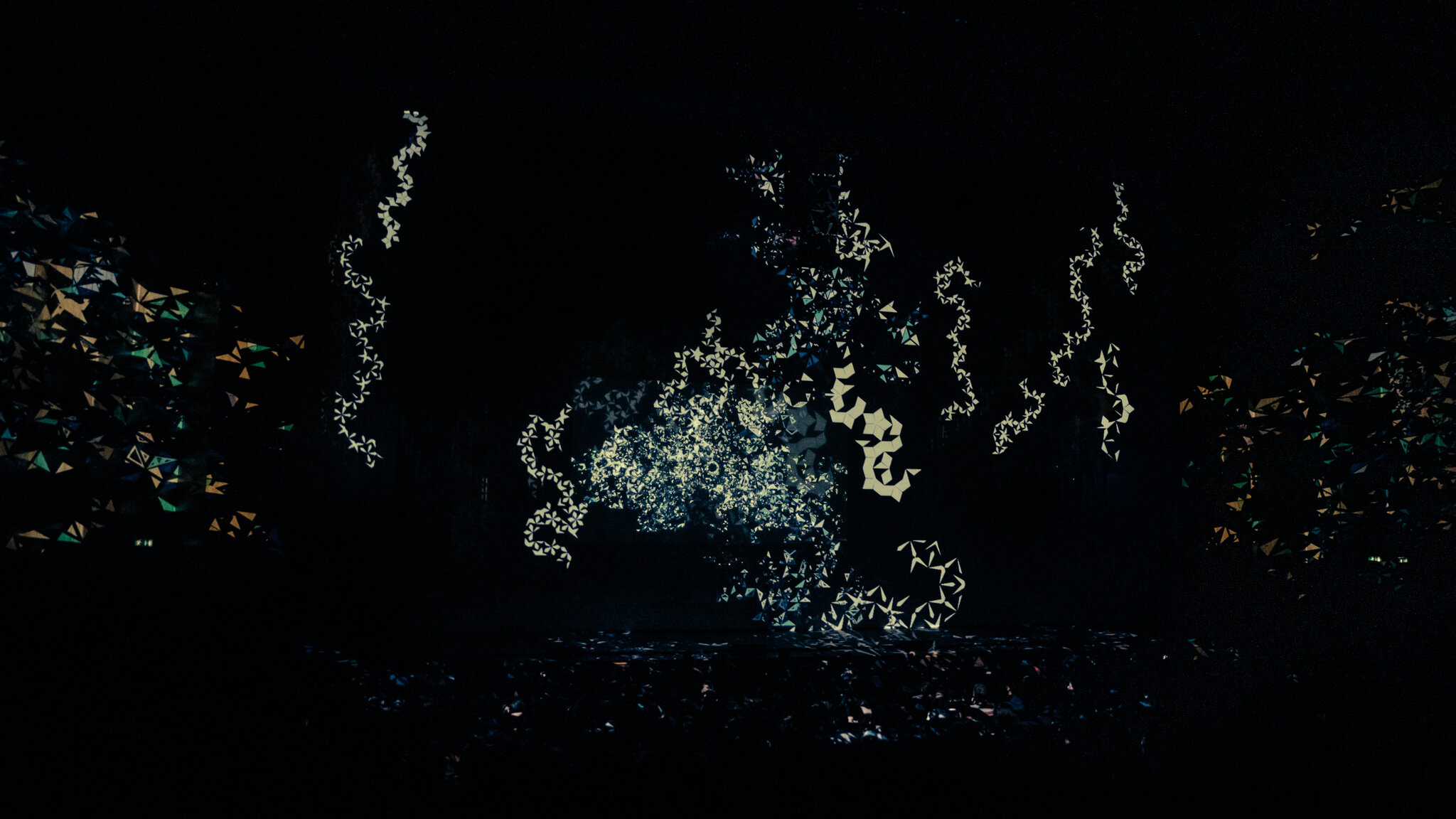Visuals for Max Cooper | Yearning For The Infinite
from Max Cooper’s website: Presented as both an album scored to a visual story and a mind-blowing immersive audio/visual live show, Yearning for the Infinite was borne out of a commission from the Barbican, the arts and learning centre dedicated to pushing boundaries.
My contributions to this project are the visuals for two tracks: Penrose Tiling and Void.
You can read more about the full project here:
https://www.yearningfortheinfinite.net/
https://maxcooper.net/yearning-for-the-infinite-album
https://www.barbican.org.uk/digital-programmes/max-cooper-yearning-for-the-infinite-rob-clouth-llyr
…
Penrose Tiling
Max Cooper
“Another way to approach the idea of infinity visually was via Penrose Tiling, an aperiodic tiling system developed by Roger Penrose in the 1970’s, which can tile an infinite plane without repeating. This idea of the link between non-cyclic structure and the infinite was also central to the processes of improvisation used throughout. But for this piece I wanted to mirror the tiling regime more explicitly.
I opted to do that by having all loop lengths corresponding to prime numbers. This yielded the equivalent behaviour musically, where at least for the length of the track (and for two weeks or so if it had gone on playing), there would be no exact repeat of any bar - loops without loops. The feeling of this idea was a nice rhythmical syncopation which I applied to some live instrumentation with the sansula to begin with, and built more and more layers of tight percussion around as the piece progressed.“
Jessica In
“Named after mathematician and physicist Roger Penrose, Penrose tilings are geometrical packings of a pair of rhombohedral tiles that can be used to tile a flat plane ad infinitum without the pattern ever repeating itself. Although comprising of a set of regular rhombus blocks, it is non-periodic, meaning that it lacks translational symmetry. While this aperiodicity implies that a shifted copy of a tiling will never match the original, a Penrose tiling may be constructed so as to exhibit both reflection symmetry and five-fold rotational symmetry - the tiling has scaling self-similarity, so the same patterns occur at larger and larger scales.
For the Infinite visuals, the pattern is constructed in a way to try and reveal the growth of the tiling, spinning out in trails that initially appear to be random but gradually exhibit the underlying structure. The work explores the visual properties of the tiling to exhibit a mixture of regularity and disorder that somehow retains an order to the eye. Different scales are superimposed to explore the tiling’s self similarity that occurs through its different hierarchical levels of composition and decomposition. Many different algorithms for producing a spacing filling Penrose exist, the method used here is a substitution method known as a Robinson triangle decomposition: the Penrose rhombi are continually split into triangles with side lengths in ratios 1 and φ (phi, golden ratio). Smaller and smaller tiles are created as they are continually broken into these ratios, generating a potentially infinite tilling structure."
Void - Parallax
Max Cooper:
"I wanted to try and render the cold dark void of emptiness with this chapter, which meant some darkroom industrial sounds, and lots of power. I started by making binaural recordings of Antony Gormley sculptures, clanging them, scraping them, tapping them etc, with permission, and without damaging them of course! Some of the large sculptures in particular created these huge resonances as the metal surfaces bowed at their natural low frequency, it was a lot of fun to work with, and sounds pretty mad on a big system.
For the video, rather than just going black screen, I thought a lo-fi approach could work, focused on simplicity, intensity and the use of parallax to create the appearance of distance with infinite vanishing points. Jessica In created a super intense moire-pattern version of this idea which fits the audio perfectly, and forms one of the most intense moments of the live show. For the live show I also layer over some infinite cityscape imagery on the gauze screen, blended with the abstractions, to link back in the human side of the story."
Jessica In:
"The visuals for Void are an exploration in pseudo-perspective. The animated drawing study is composed entirely of straight lines programmed to shift and interpolate through a series of motion cycles. The resulting moiré and kinegram lines create a series of rectangular voids which shift to waves, inverted view cones and back again. Utilising the notion of the straight intended mark, versus the perceived (but never drawn) curving forms, the two-dimensional lines explore illusionary depth and space expanding and contracting as the drawing progresses in time."
Follow Max Cooper:
facebook.com/maxcoopermax/
instagram.com/maxcoopermax/
maxcooper.net/
The full album project is explained at yearningfortheinfinite.net
photos by Michal Augustini + Alex Kozobolis





